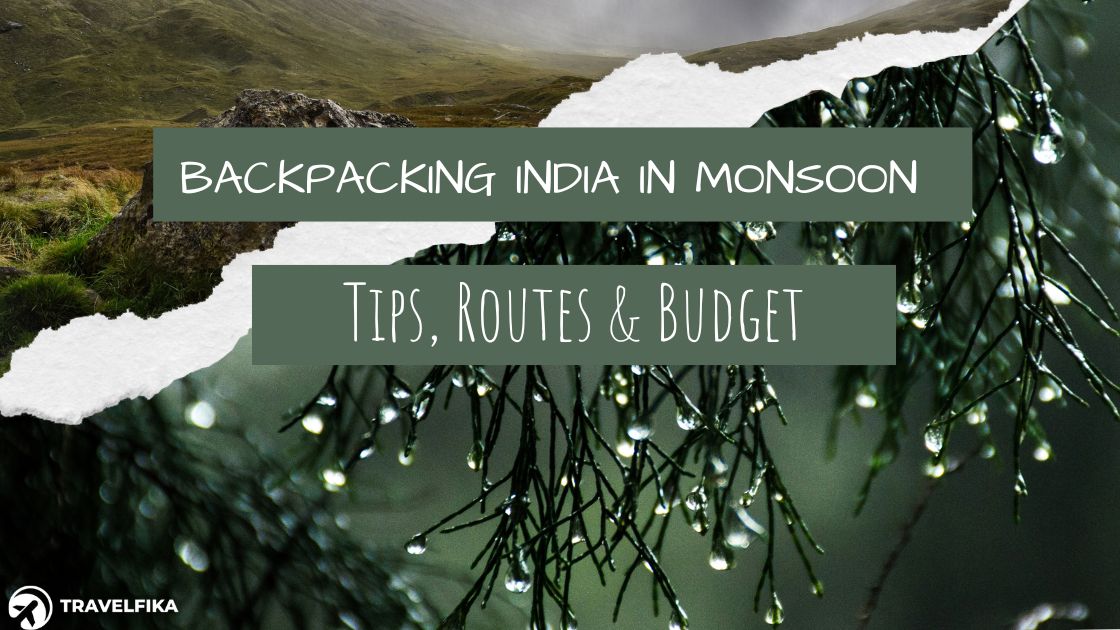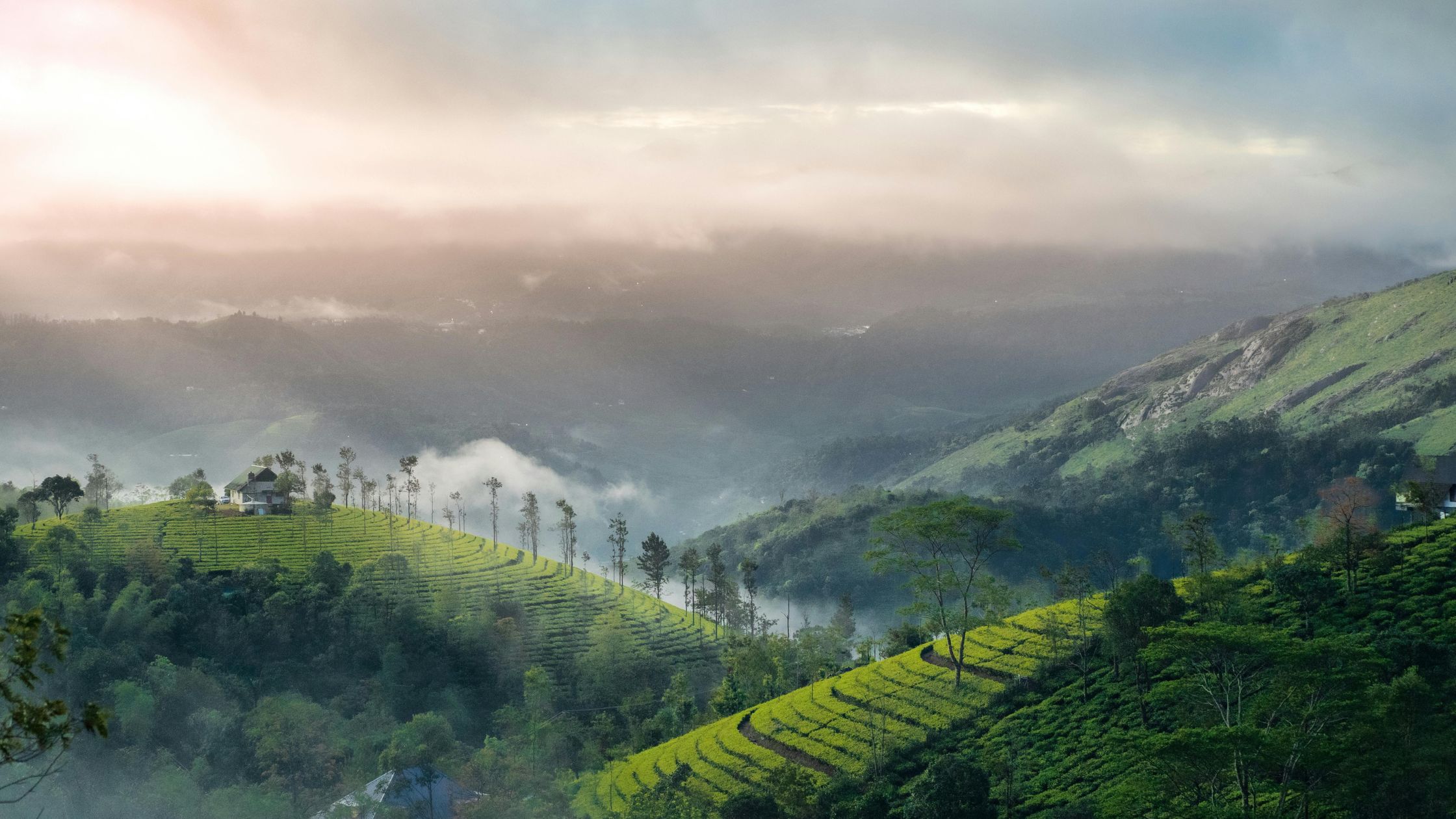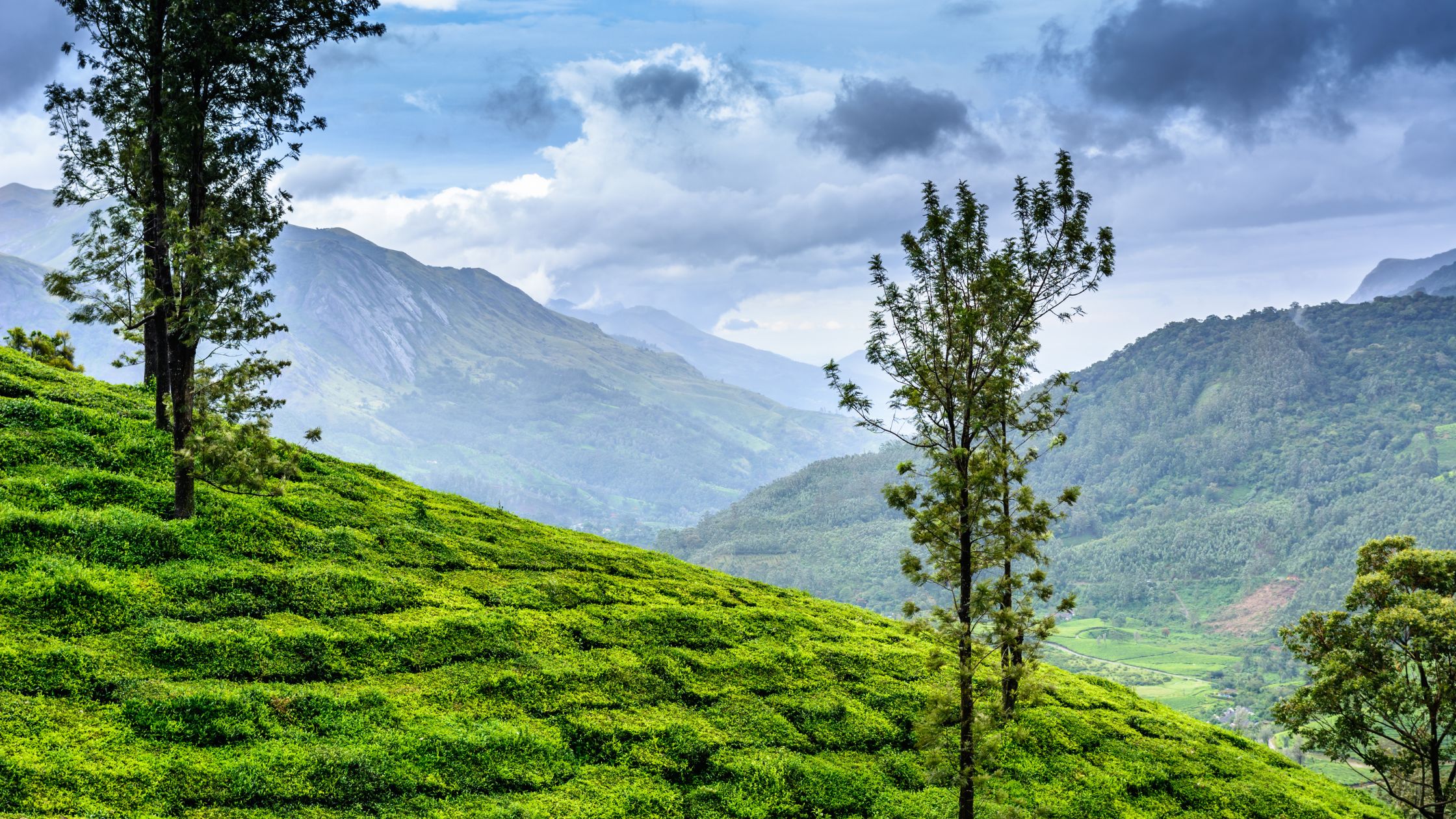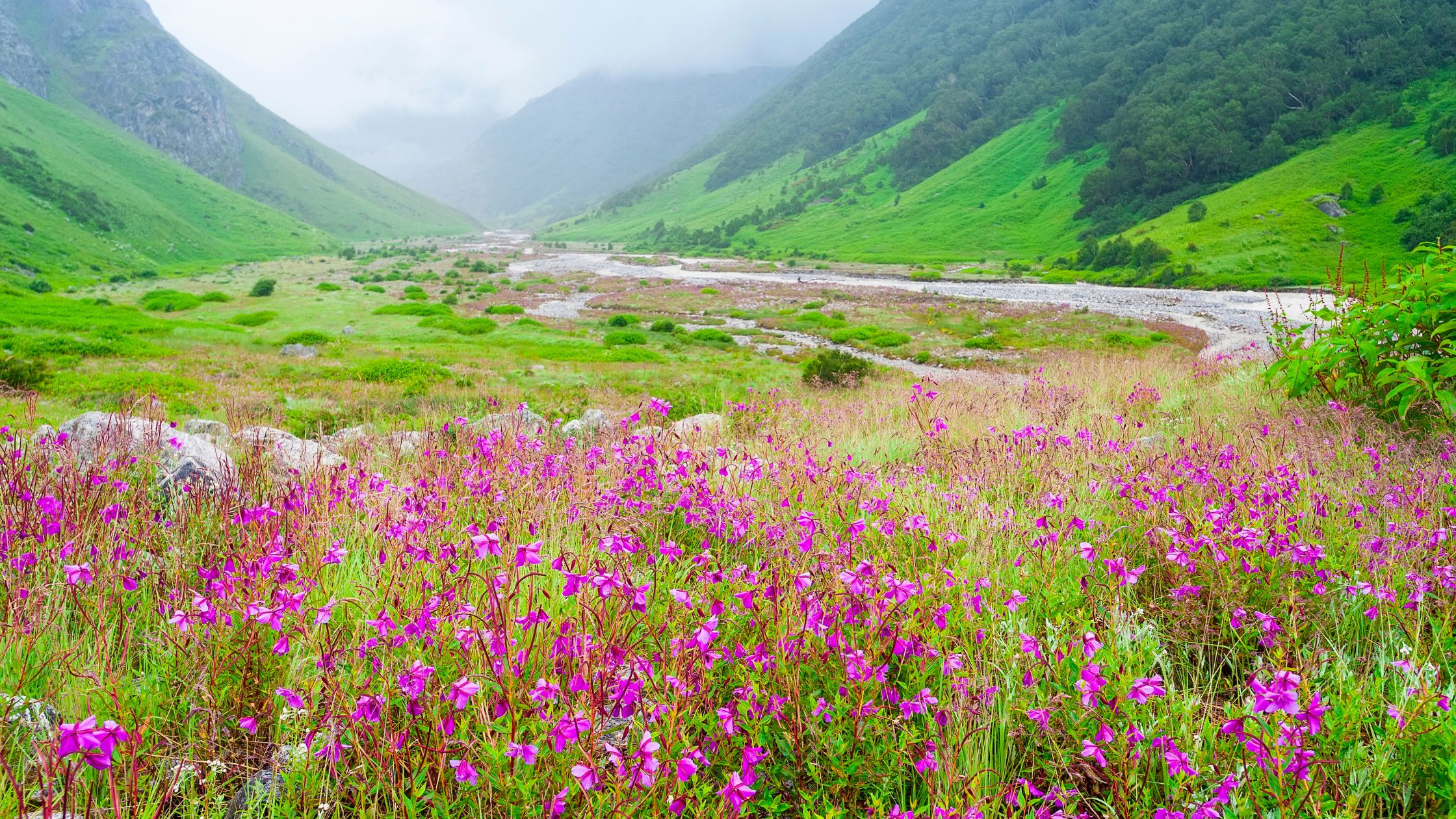
Rain makes everything look fresh and clean, right? The trees look greener, the air feels cooler, and the smell of wet soil is just amazing. Monsoon in India is like nature’s way of washing the world and making it feel alive again.
Now imagine walking through misty hills, seeing waterfalls, and sipping hot chai by the window. Sounds nice? That’s what backpacking in India during monsoon feels like. It’s a great time to travel. The big tourist crowds are gone. Hotels and buses are cheaper. And everything around looks extra beautiful.
Some people worry that rain might spoil the fun. But don’t worry. With a few smart tips and the right places to visit, you can enjoy an amazing trip even during the rainy season. In this guide, we’ll help you with everything, from safety tips and routes to budget advice. So, pack your bag, wear your raincoat, and let’s go exploring!
Is It Safe to Backpack in India During the Monsoon?
This is a very common question: Is it safe to travel in the rain? The answer is yes, but you must be careful. Rain is fun, but sometimes it can also cause problems like water on roads, slippery paths, or even landslides in the mountains.
But don’t worry too much. Many places in India are safe to visit in the monsoon. The Western Ghats in Kerala, Karnataka, and Maharashtra are great. The roads there are in good shape, and the hills are not too high. South India also stays open during monsoon and looks very green and beautiful.
Some areas are not safe, though. Places that flood easily or high Himalayan treks during heavy rains are better to skip. Big cities like Mumbai or Kolkata can also get messy during heavy rain.
Here’s a smart tip: Always check the weather news before you travel. If you see a flood or landslide warning, wait for a few days or change your plan.
Also, use safe public transport. Take government buses or trains if possible. They are safer and more reliable when it rains.
Best Monsoon Routes for Backpackers
Kerala: Tea Hills and Forest Trails
Kerala is one of the best places to visit during the monsoon. The rain makes the tea gardens in Munnar and the forests in Wayanad look fresh and green. Vagamon is a quiet hill station where you can enjoy peace and nature.
You can reach Munnar or Wayanad from Kochi or Calicut by bus or cab. The journey itself is very scenic, with misty hills and waterfalls along the way.

Monsoon in Kerala means fewer tourists, cheaper hotels, and a peaceful vibe. Try staying in small homestays where you can enjoy home-cooked food and talk to locals. Go on a jeep ride in Munnar, walk in the forest trails of Wayanad, or just sit and watch the rain from your balcony.
Don’t forget to try Kerala food, hot appams, stews, banana chips, and fresh fish curry taste even better during the rains.
Karnataka: Coorg and Chikmagalur
If you love coffee and waterfalls, Coorg and Chikmagalur are perfect for you. The rains bring the hills to life with mist and greenery all around. Coorg is famous for its coffee estates and the Barapole River, where you can try whitewater rafting. Chikmagalur has lovely drives through forests and amazing sunset views.
Both these places are great for short treks, nature walks, and even just relaxing. You can travel to these places easily from Bangalore or Mangalore. The roads are good and safe, even during the rains.

There are many budget resorts, treehouses, and hostels where backpackers can stay. You can also try small cafes and taste local food like akki rotti, filter coffee, and spicy Coorgi pork.
Maharashtra: Sahyadris and Secret Ghats
The Sahyadri hills become magical in the monsoon. Malshej Ghat is full of clouds and small waterfalls. Kaas Plateau, also called the “Valley of Flowers of Maharashtra,” blooms with colorful flowers in August and September.
You can go trekking, visit old temples, and walk in peaceful villages. These places are close to Mumbai and Pune, so they’re perfect for weekend backpackers.
Just one thing, avoid driving during very heavy rains as the roads can get slippery. It’s safer to use public buses or trains. Also, carry snacks and water because some areas have fewer shops.
Himachal: Only for Late Monsoon
If you want to explore the Himalayas, wait until mid or late August. That’s when the heavy rains slow down and the mountain trails open. Places like the Valley of Flowers, Jibhi, and Shoja are calm, cool, and full of natural beauty.
The Valley of Flowers is famous for its bright flowers and green meadows. Jibhi and Shoja are small towns with wooden cottages, pine trees, and lovely walking trails.

These places are better for people who enjoy trekking and don’t mind walking a lot. Carry warm clothes and proper shoes, as it can still get wet and cold.
Northeast India: A Cloudy Heaven
If you are okay with a lot of rain, Northeast India is a dream. Shillong, Cherrapunji, and Mawlynnong are some of the wettest places in the world, but they are also full of charm. You’ll see huge waterfalls, cloudy skies, and green hills.
The roads are clean, people are friendly, and the food is unique. Try the momos, bamboo shoot curry, and local pork dishes. Don’t miss the living root bridges and hidden caves.
Just know that it rains a lot, so be ready for wet shoes and foggy days. Travel slowly and enjoy the peaceful feeling of walking in the clouds.
What to Pack for Monsoon Backpacking
Packing smart is very important when traveling during the rainy season. You don’t want to carry too much, but you also don’t want to miss the basics.
Here’s a simple list of what you should pack:
A strong raincoat or a good poncho
Waterproof cover for your backpack
Clothes that dry quickly (avoid jeans and heavy cotton)
Extra socks, because wet socks are uncomfortable
Flip-flops or sandals for walking in water
Mosquito cream or spray
A small torch or flashlight
Light snacks like nuts, dry fruits, or energy bars
A power bank for your phone
Offline map apps in case of a poor signal
Bonus tip: Carry small zip-lock bags to keep your phone, cash, and important papers safe from water.
Don’t pack too much, travel light and smart. A heavy bag will make things harder, especially when it’s raining. Keep it simple, keep it dry, and enjoy the journey.
Monsoon Travel Budget Tips
Backpacking during the monsoon in India can save you a lot of money. Since it’s the off-season in many places, you get good deals on stays, travel, and food. Most hotels and hostels offer discounts because there are fewer tourists. That means more choices for you, and for less money.
Public transport, like buses and trains, is also cheaper and easier to book during the monsoon. Plus, many natural spots like waterfalls, green hills, and forest trails are free to visit. You can enjoy the beauty of these places without paying any ticket fees.
For example, in Munnar, you can get a clean and cozy hostel bed for under ₹500 per night. In small towns, even cheaper options are available if you don’t mind basic stays.
Here’s a simple guide to your daily backpacker budget:
Shoestring Budget: ₹800–₹1,000/day (hostel stay, local food, buses)
Comfortable Budget: ₹1,200–₹1,800/day (guesthouse, a few cabs, better meals)
Tips to save money:
Use local buses or shared jeeps instead of private cabs
Eat at small dhabas or food stalls for tasty and cheap meals
Book rooms that give free Wi-Fi and breakfast
Travel in groups if possible to split costs
Also, try booking rooms on weekdays when prices are lower. Don’t spend too much on fancy places; enjoy the outdoors more. You can enjoy big beauty with a small budget.
Smart Safety and Health Tips
Monsoon is lovely, but you need to be careful. Wet roads, food safety, and travel delays can be a problem if you don’t plan right. But with a few simple tips, you’ll stay safe and happy.
Always drink bottled or filtered water. Avoid tap water, even if locals drink it.
Skip raw street food in the rainy season. It can go bad quickly in the damp weather. Choose fresh, hot meals instead.
Walk slowly and watch your step; wet paths can be slippery. Especially on treks or in hilly towns.
Avoid trekking during heavy rain or thick fog. Wait for a clear day. It’s safer and you’ll see better views.
If you start to feel unwell, stop and rest properly. Don’t push yourself. A little rest can save your trip.
Carry a small first-aid kit with basic medicines, band-aids, and cream for cuts or rashes.
Stay safe, stay alert and enjoy the season fully.
How to Travel Around India in Monsoon
Getting around India in the monsoon is easy if you use the right transport.
Buses are safe, run often, and go to almost every small town. Most state buses keep moving even when it rains.
Trains are great for long rides. They’re cheap and comfortable. Book your seat early on apps like IRCTC.
In hilly areas, use shared jeeps or local cabs. They know the roads well and are safer in the rain.
You can also use travel apps like Travelfika or local state apps to book buses and cabs.
Avoid using ferries or mountain bikes during the monsoon. Water can rise fast, and roads may be slippery. Travel smart and choose the safe path.
Solo or Group? Choosing What’s Right for You
Traveling alone and in a group is both fun. If you travel solo, you can go where you want, when you want. You have full freedom. But you also need to plan well and stay alert, especially in new or remote places.
Traveling in a group feels safer, especially in hilly or forest areas. You can also share food, rides, and room costs.
Not sure who to go with? Join online backpacker groups on Facebook or Reddit. You’ll find people with the same travel plans. Whether alone or together, India has space for every heart.
Why Monsoon is a Special Time to Travel
Monsoon changes everything. A quiet village becomes green and bright. A dry hill turns into a place of clouds and mist. Even a cup of tea feels better when it rains outside.
The rain brings new smells, soft sounds, and clean air. You’ll hear birds more clearly. You’ll see fog floating over trees. And you’ll feel like the world is slowing down just for you.
Take this time to walk slowly, pack light, and enjoy the small joys, like stepping in puddles or sitting under a roof watching the rain fall.
India in monsoon is not a trip, it’s a feeling.
FAQs About Backpacking India in Monsoon
1. Is it okay to travel during the monsoon in India?
Yes, it’s okay if you choose the right places and stay alert. Many places like Kerala, Coorg, and Chikmagalur are safe and beautiful in the rain. Just avoid areas with floods or landslides, and always check the weather before you travel.
2. What are the best monsoon backpacking destinations in India?
Some of the best places are Munnar, Coorg, Chikmagalur, Malshej Ghat, and Shillong. These places look green and fresh during rain, and you’ll find fewer tourists. Just make sure to pick spots with good roads and safe weather.
3. What’s the daily budget for backpacking in the monsoon?
If you’re on a tight budget, ₹800 to ₹1,000 per day is enough. It covers stay, food, and local travel. If you want more comfort, keep ₹1,200 to ₹1,800 per day. Monsoon is off-season, so prices are usually low.
4. What should I pack for a monsoon trip?
Carry a raincoat or poncho, fast-dry clothes, extra socks, a waterproof bag cover, a torch, mosquito cream, snacks, and a power bank. Zip-lock bags help keep money and phones dry. Travel light but smart, pack only what you need.
5. Can I trek in the mountains during monsoon?
Some treks are okay in late monsoon, like the Valley of Flowers or Jibhi. But avoid high Himalayan treks in heavy rain. Paths can get slippery and foggy. Always check with local guides and wait for safe weather to start.
